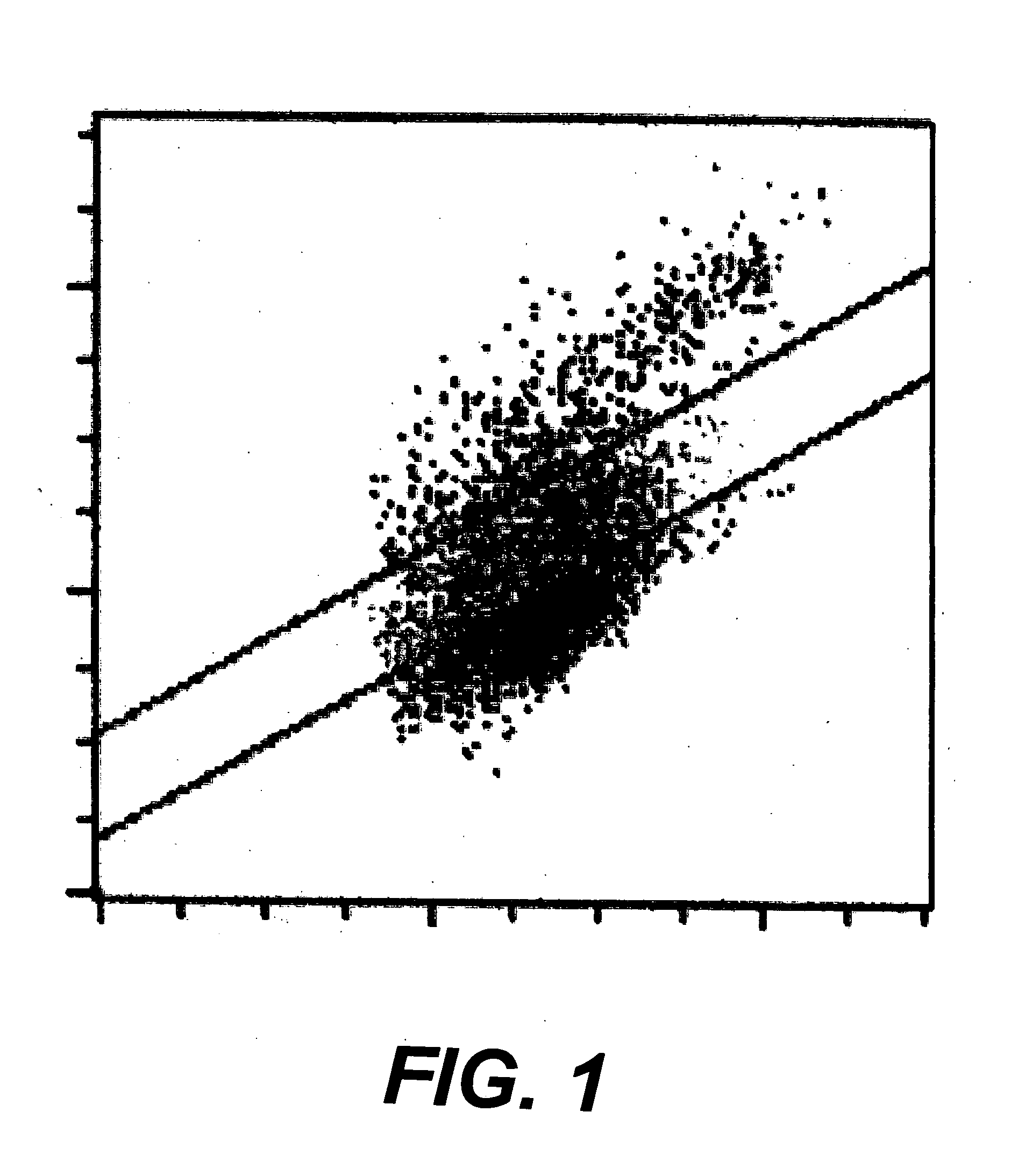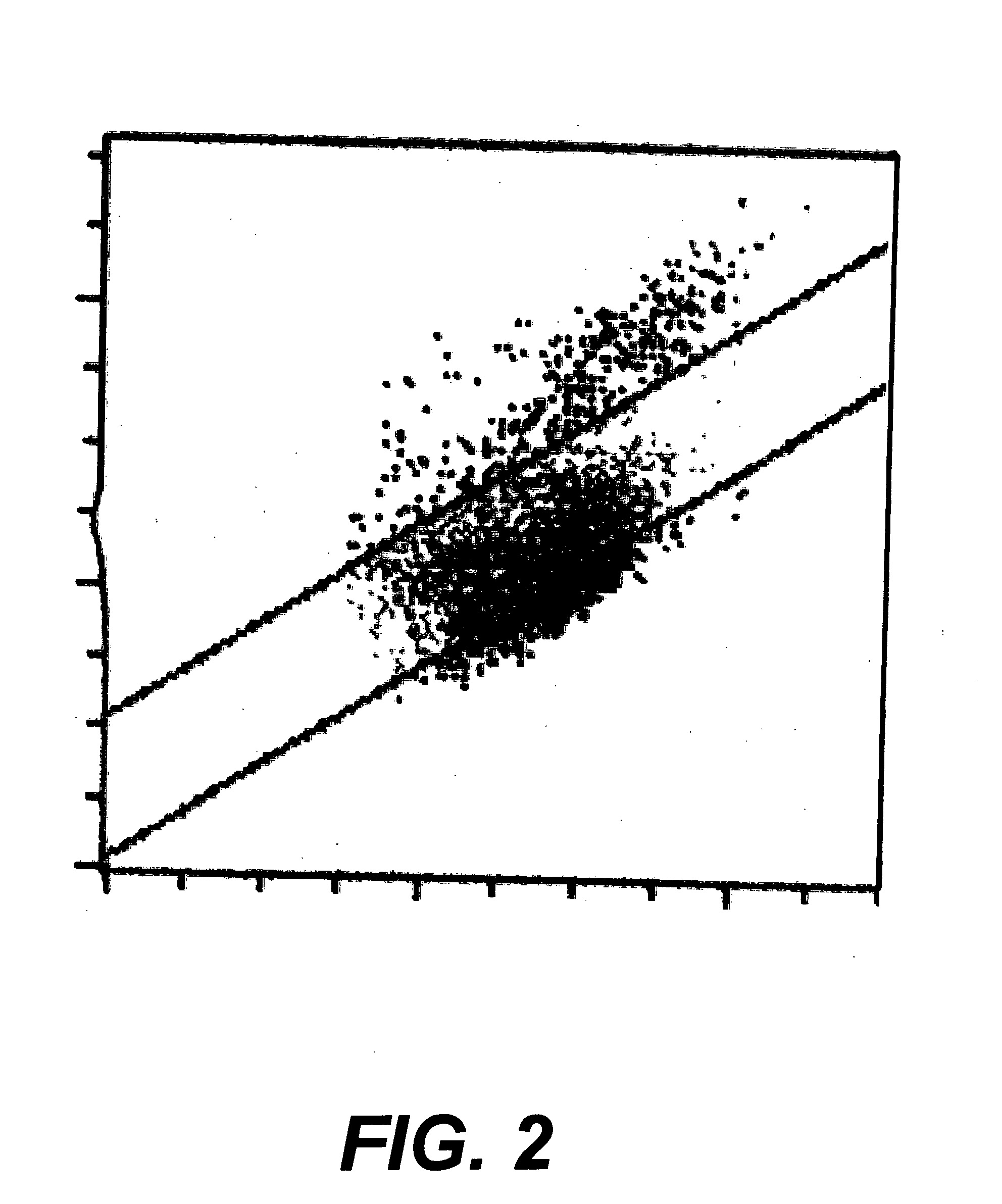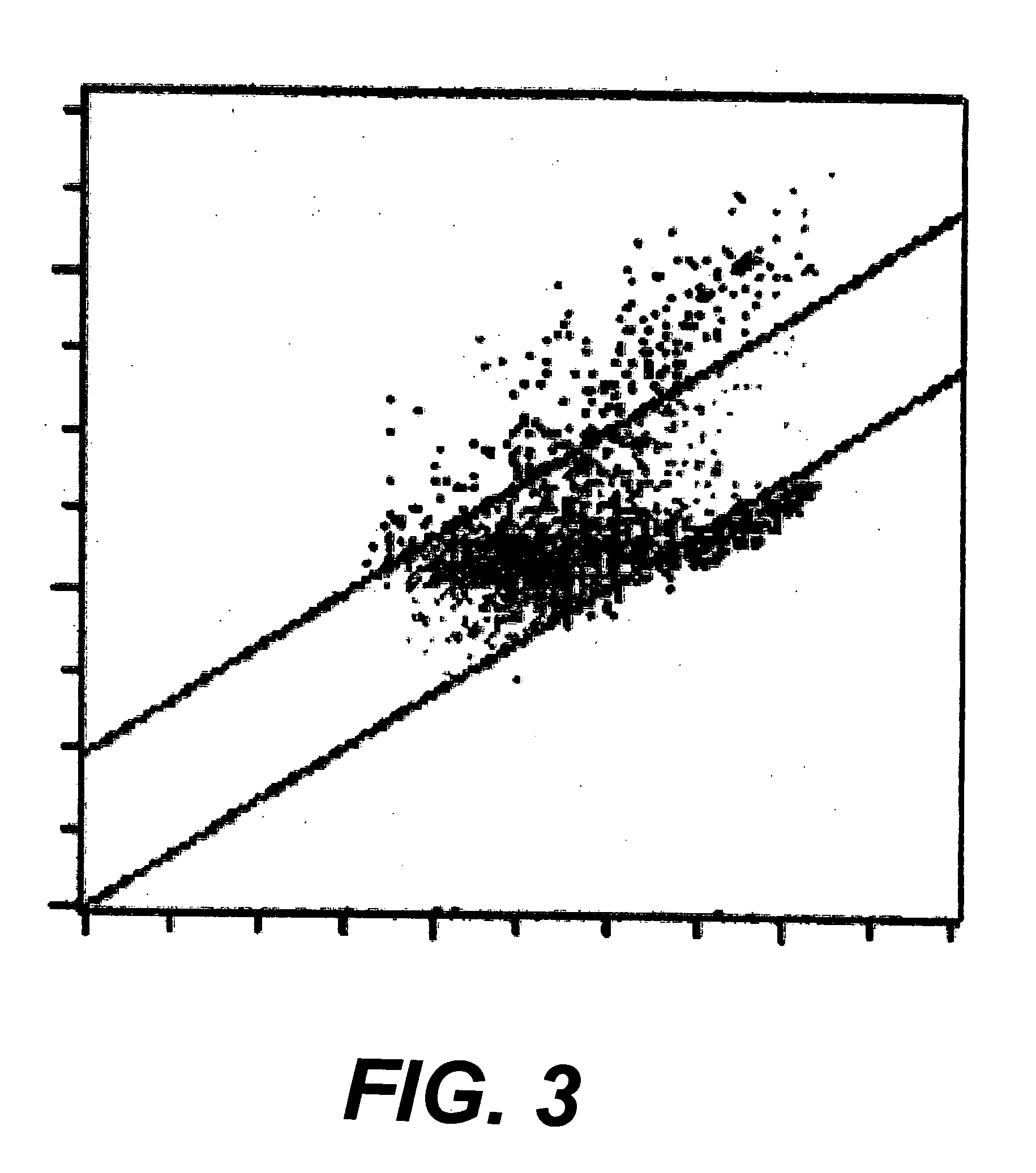Preparation of platelet analogs
a technology of analogs and platelets, applied in the field of reference and control materials for hematology instruments, can solve the problems of blood clotting, unfavorable use of actual platelets in the control, and particularly problematic platelets
- Summary
- Abstract
- Description
- Claims
- Application Information
AI Technical Summary
Benefits of technology
Problems solved by technology
Method used
Image
Examples
example 1
Small Batch With Small and Large Starting Particles
[0029] This example illustrates how treatment of previously prepared platelet analogs that were optimized for electrical impedance measurements can be further treated by the methods of the present invention to achieve a size, distribution, and optical refractivity that is optimal for both optical and electrical impedance particle counters. A series of platelet analogs, i.e., samples of goat erythrocytes that had already been annealed, i.e., treated by methods of the prior art to achieve size reduction by extracting cellular fluid by osmotic pressure and by fixing with a fixing agent, were suspended in a suspending medium and divided into portions. Each portion was then placed in a separate receptacle for treatment. Two lots of treated erythrocytes were used, one having a mean platelet volume (MPV) of 7.7 fL and the other a mean platelet volume of 11.5 fL. Within each size range, different samples were treated differently, in terms ...
example 2
Large Batch With Intermediate Size Starting Particles
[0034] The procedure of Example 1 was followed with the following exceptions. The MPV of the annealed goat red blood cells that were used as a starting material was 10.4 fL. Fifty (50) mL of the annealed red blood cell concentrate was diluted by the iso-osmotic solution to a final volume of 1 liter. The sample was then placed in a 1-L centrifuge bottle and heated in a water bath at 56° C. After heating for 24 hours, the sample was poured into a 1-L bottle containing sufficient reagent glutaraldehyde that the final solution contained 10% glutaraldehyde by volume. Fixing in glutaraldehyde was allowed to continue for 24 hours, after which time the sample was washed four times in an organic buffered saline solution. Parallel samples prepared in the same manner were then conditioned in media containing red blood cells at room temperature for 11 days. Additional parallel sets of samples were also prepared in the same manner except that...
example 3
Effects of Pre-Conditioning
[0037] This example illustrates the effects of pre-conditioning the annealed goat red blood cells prior to the heat treatment and fixation steps of the present invention. The pre-conditioning consisted of setting at room temperature or moderate heating at 37° C. for 2-4 hours in various diluents.
[0038] The diluents were the aqueous iso-osmotic solution used in the preceding examples, Ringer's saline solution, and water, used separately on individual samples. Further samples were pre-conditioned with the same diluents but further containing 20% or 40% propylene glycol by weight. Still further samples were also conditioned, subsequent to the heat and fixation treatments, in media containing human red blood cells. Following the pre-conditioning, the various samples were treated with heat and glutaraldehyde as in the preceding examples.
[0039] The results were variations in the final particle size and an improvement in platelet fit. The largest final particl...
PUM
 Login to View More
Login to View More Abstract
Description
Claims
Application Information
 Login to View More
Login to View More - R&D
- Intellectual Property
- Life Sciences
- Materials
- Tech Scout
- Unparalleled Data Quality
- Higher Quality Content
- 60% Fewer Hallucinations
Browse by: Latest US Patents, China's latest patents, Technical Efficacy Thesaurus, Application Domain, Technology Topic, Popular Technical Reports.
© 2025 PatSnap. All rights reserved.Legal|Privacy policy|Modern Slavery Act Transparency Statement|Sitemap|About US| Contact US: help@patsnap.com



